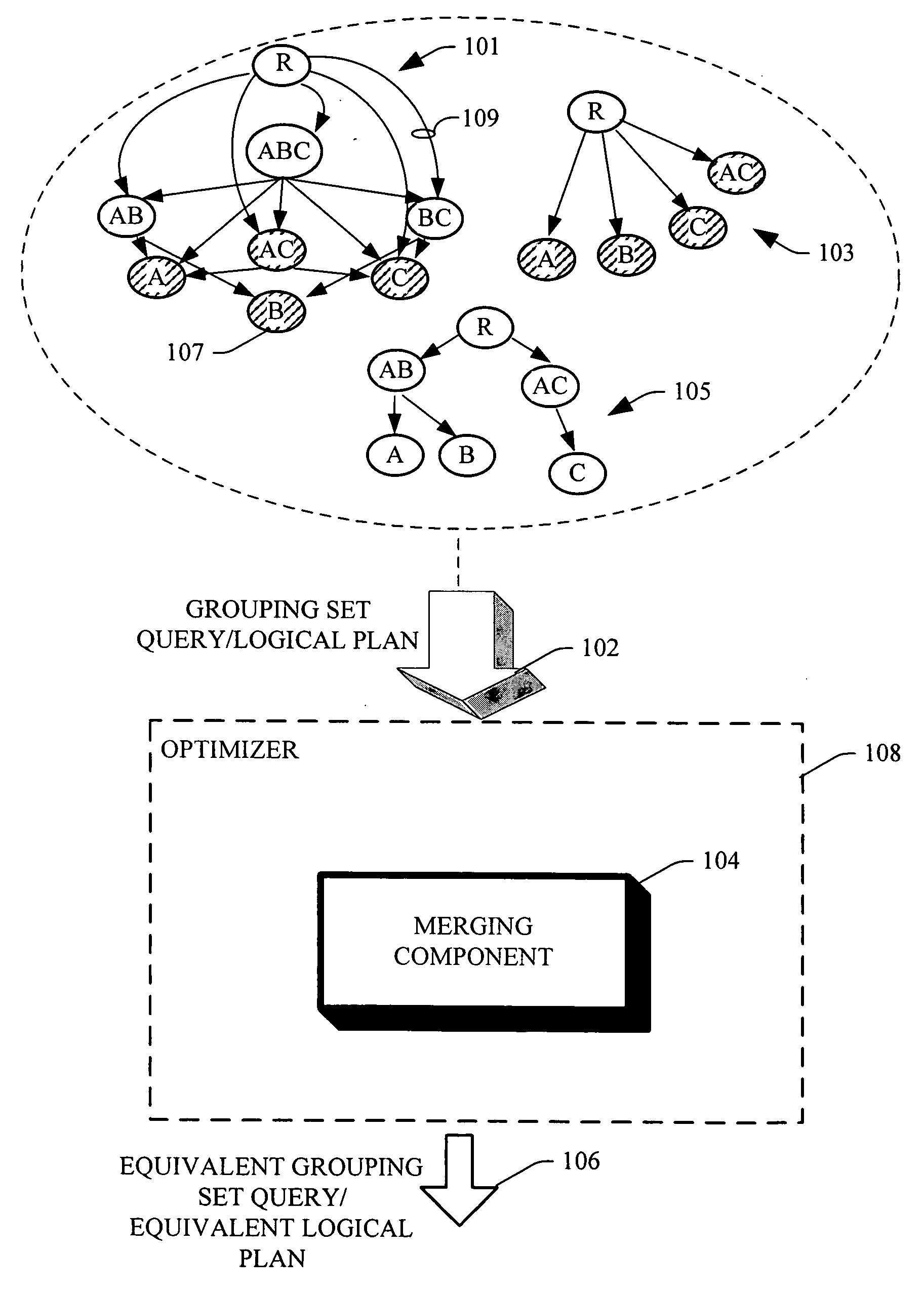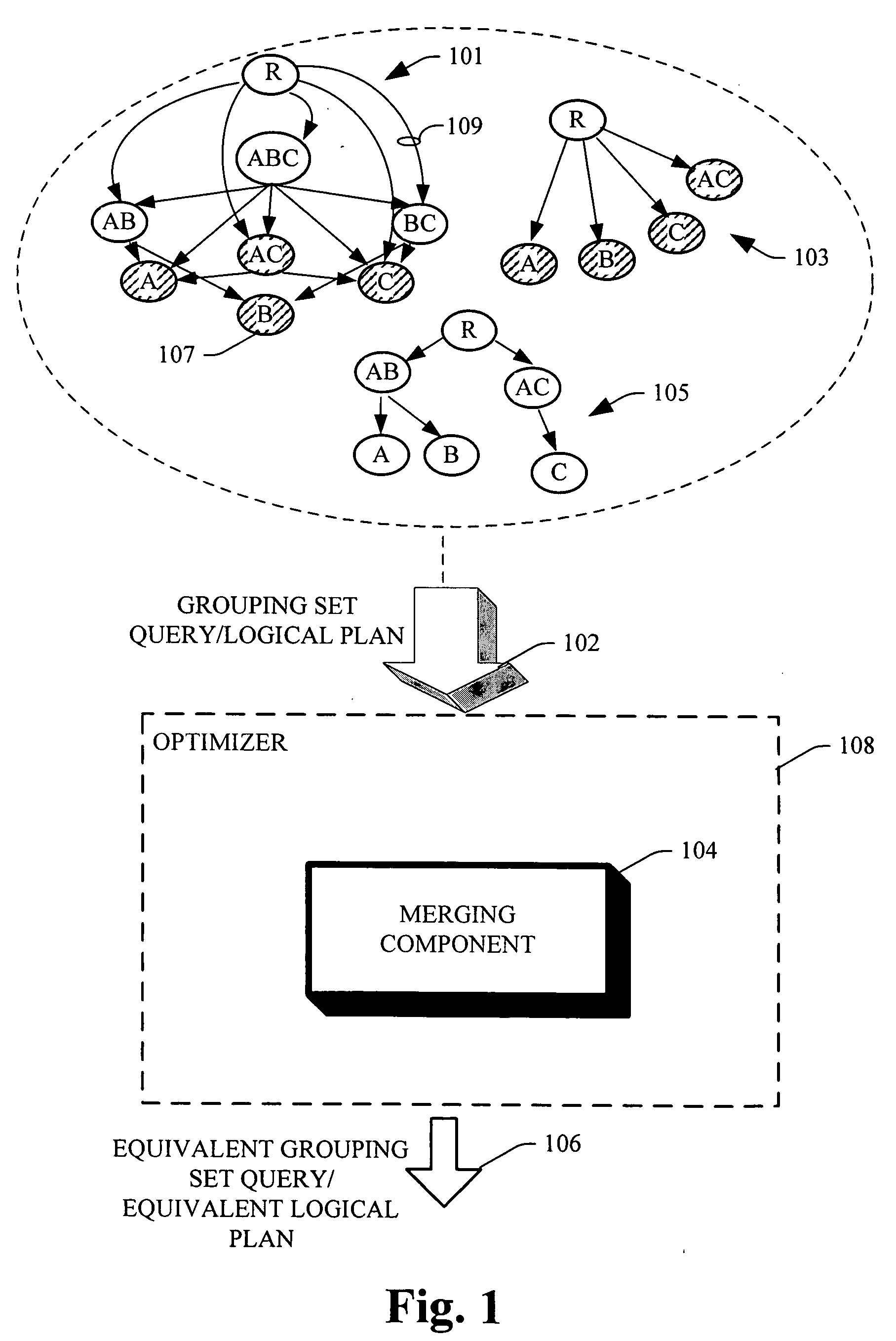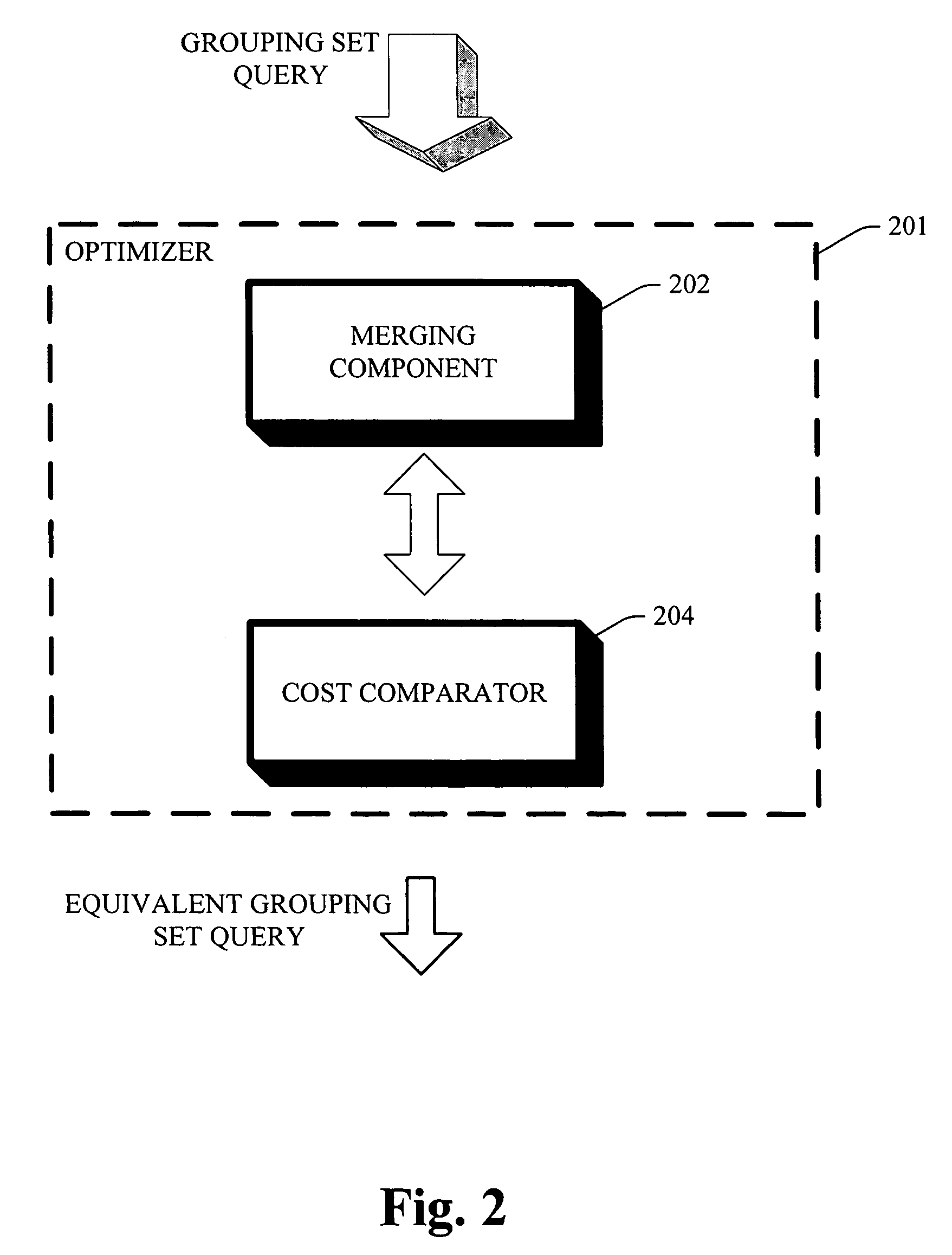[0010] The subject invention provides for systems and methods of optimizing grouping set queries via an optimizer that examines the space of plans in a systematic and cost based manner, and accepts as input a logical plan for a grouping set query to produce an equivalent logical plan of the grouping set query, wherein the equivalent logical plan and / or grouping set query can turn out to enjoy a lower cost than the inputted grouping set query. The optimizer includes a merging component to merge pairs of sub plans to facilitate a plan choice with a lowest cost. The merging component can take as input two sub plans (e.g., sub plan P1 with root node V1 and sub plan P2 with root node V2, wherein each sub plan is a sub-tree of a logical plan whose root node is directly pointed to a Relation “R”), to return a set of sub-plans as out put with a root node V1∪V2, which is the smallest relation from which both V1 and V2 can be computed. Moreover, from all the plans generated thru the merging component, the lowest cost plan and / or the plan with the least
execution time can be chosen, and other pairs discarded. Accordingly, the invention exploits opportunities available by examining the space and alternative logical plans that exist for computing a set of group by queries.
[0011] According to a methodology of the subject invention, initially a logical plan for a given set S of Group by Queries for a Relation R can be initiated on a naïve plan that is computed directly from Relation R, and a cost of such plan (e.g., the expense and / or time associated with execution of a query) can be designated. Subsequently, a loop can be created, wherein for each iteration of such loop the available plans are paired together and merged to create new plans. Upon completion of each iteration a plan with the lowest cost can be maintained and the remainder of the plans discarded. The process is then repeated on the maintained plans. For example, initially the queries A, B, C, D exist as individual queries that are computed from a base relation R. In a first iteration, merger for A&B, A&C, A&D, B&C, B&D, and C&D is considered. Assuming that A&B yield the lowest cost, a new sub plan with node AB can be created and computed from R, and individually A and B will be computed from such node AB. Accordingly, at the end of the first iteration two of the existing plans A, B are merged into one, and C and D are computed from the base relation R. In the second iteration A and B are discarded and a plan rooted in AB is maintained (e.g., greedily frozen) and the process is reiterated by considering merging the sub plan rooted at AB with C, the sub plan rooted at AB with D, and also considering merging C and D. Assuming that merging C and D provides the lowest cost and the highest benefit, a new sub plan with node CD can be created and computed from R. Nodes C and D can then be individually computed from the node CD. As such, at the end of the second iteration two sub plans remain, wherein one sub plan is rooted in AB and another rooted in CD. Likewise, a merger of AB and CD to create a node ABCD can be considered if such merger can lower the associated cost. In general, to be able to continue with the iterations, at least one merging that reduces the costs should be possible.
[0012] In a further aspect of the subject invention, the lattice that corresponds to
data structure of the grouping set query can be built bottom-up. Thus, from a sub-part of the lattice a larger set can be created, and it typically is not a pre-requisite to initially or pro-actively form or materialize the entire lattice associated with the grouping set query. Each node in the lattice represents a group by query. Put differently, the equivalent grouping set query can be generated by exploring possible group by queries in a bottom up manner, without initially materializing an entire lattice associated therewith. As such, the subject invention provides a scalable solution that can efficiently employ memory resources of the
system. Moreover, additional set of group by nodes that are not specified in a logical plan for the grouping sets query (e.g., an inputted and / or original logical plan) can be introduced.
[0013] According to yet another aspect, additional transformation roots can be introduced into an existing query optimizer that is integrated with the subject invention. For example, when a query is more than a simple query and includes filter predicates, initially a grouping set operation can be performed, followed by applying the filters on top, to obtain a more efficient plan. Moreover, similar to selections, for a reference join a grouping set computation can be pushed below the join, via a transformation rule. The subject invention can provide for different re-writings of the same query, and can supply a suitable fit with existing query optimizers.
 Login to View More
Login to View More  Login to View More
Login to View More 


